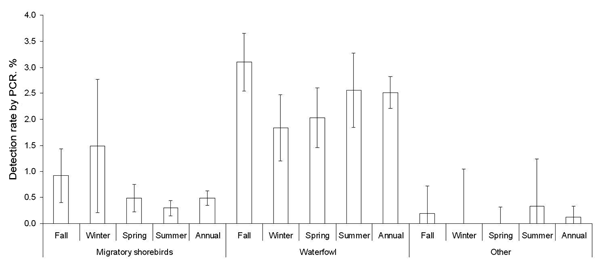Volume 16, Number 12—December 2010
Research
Surveillance and Analysis of Avian Influenza Viruses, Australia
Figure 3

Figure 3. Phylogenetic analysis of avian influenza viruses from Australia. Viruses were subtyped, and hemagglutinin genes from subtypes H5 (A), H7 (B), and H9 (C) were sequenced (boldface) and compared with isolates from other geographic locations. Only bootstrap values >50 are shown. Scale bar indicates nucleotide substitutions per site. All sequences were submitted to GenBank (accession numbers pending). LPAI, low-pathogenicity avian influenza; HPAI, highly pathogenic avian influenza.
Page created: August 29, 2011
Page updated: August 29, 2011
Page reviewed: August 29, 2011
The conclusions, findings, and opinions expressed by authors contributing to this journal do not necessarily reflect the official position of the U.S. Department of Health and Human Services, the Public Health Service, the Centers for Disease Control and Prevention, or the authors' affiliated institutions. Use of trade names is for identification only and does not imply endorsement by any of the groups named above.